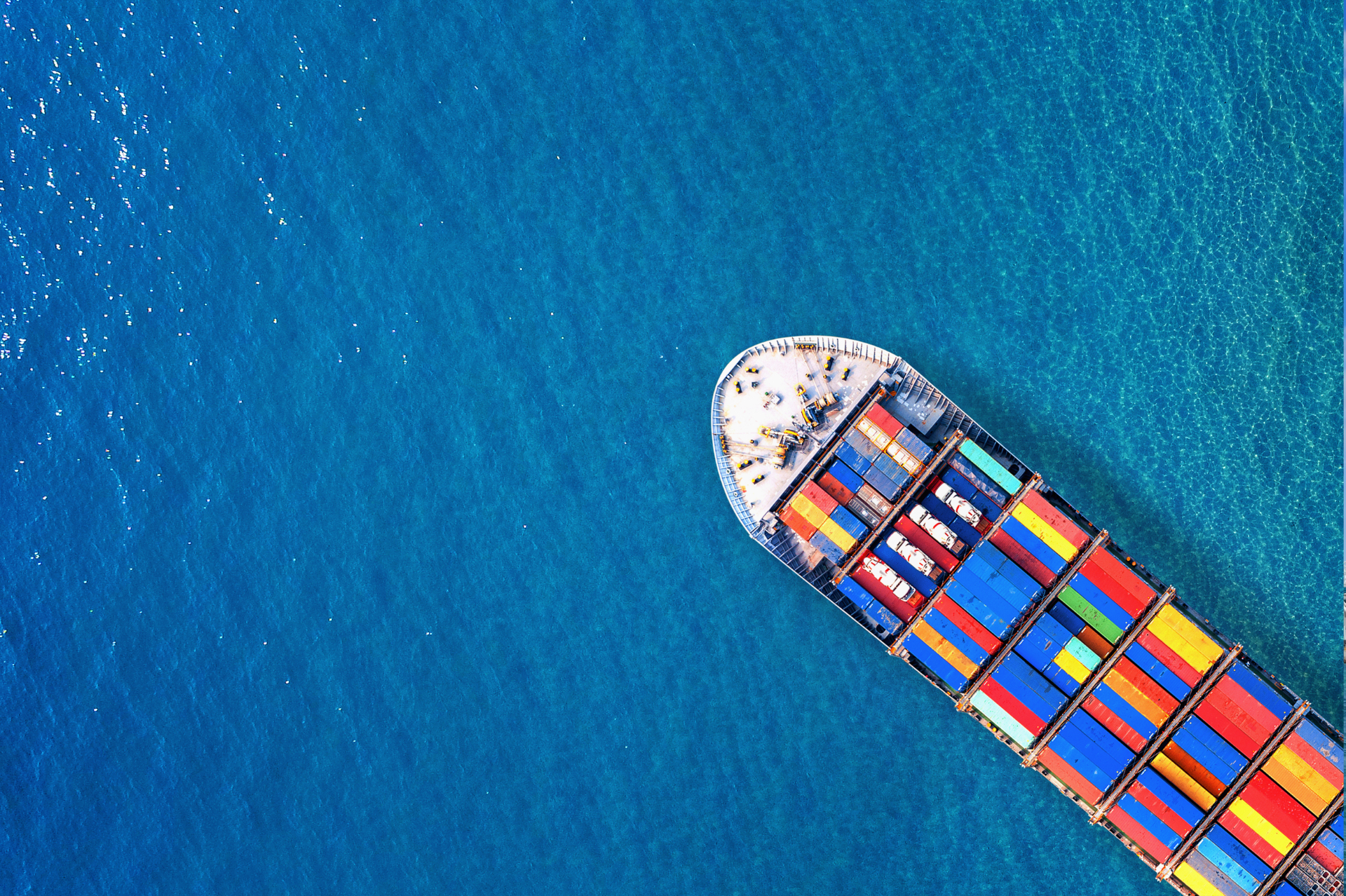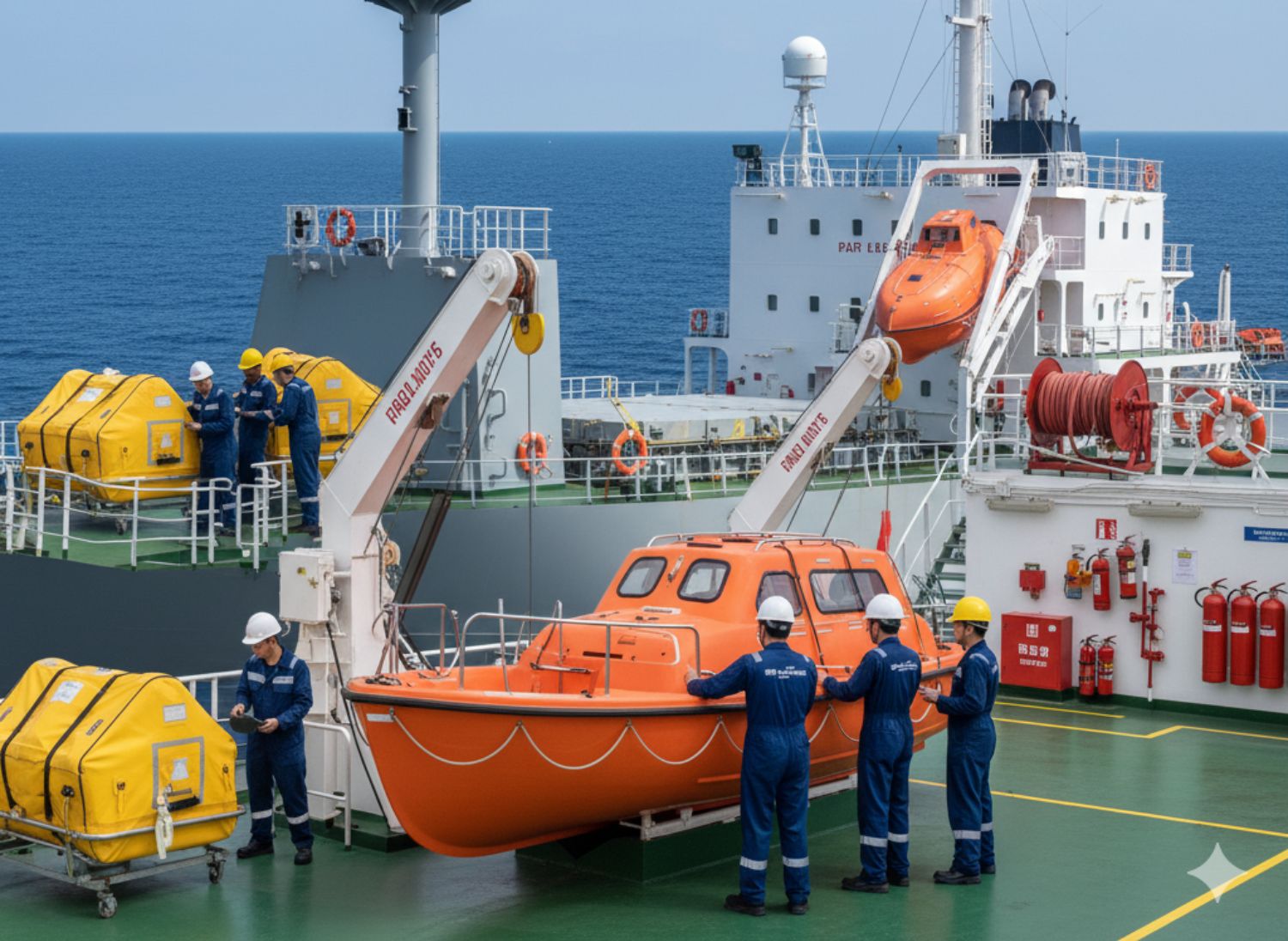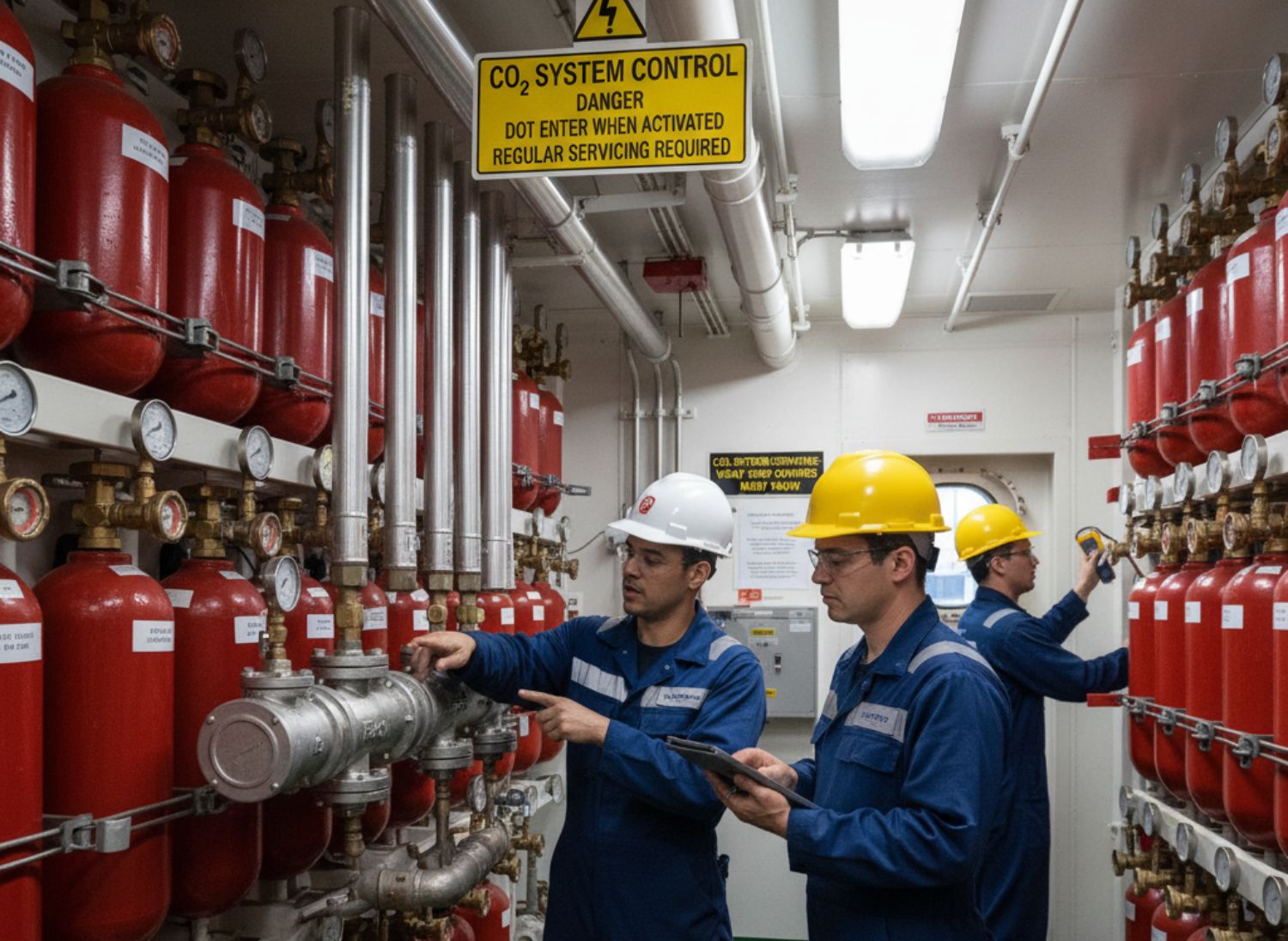End-to-End Marine Safety Scope: Lifeboats, Davits, Firefighting & More
The maritime industry thrives on precision, safety, and compliance. Whether...

When you step aboard a vessel, you trust that every safety measure has been checked and maintained. Yet, many maritime accidents reveal a hidden truthlifeboats and liferafts often fail because they weren’t serviced properly. Regular lifeboat service and liferaft service aren’t just compliance requirements; they are life-saving practices that protect seafarers in emergencies.
Table of Contents
ToggleIn this blog, we’ll dive into why consistent servicing is vital, what international regulations demand, and how proper maintenance safeguards lives at sea.

A lifeboat is the last line of defense during emergencies. Whether facing fire, flooding, or abandonment at sea, a well-maintained lifeboat can mean the difference between life and death. Regular lifeboat service guarantees:
While lifeboats are robust, liferafts are versatile and deploy faster in emergencies. Regular liferaft service provides:
The International Maritime Organization (IMO) and SOLAS (Safety of Life at Sea) conventions mandate strict inspections for lifesaving appliances.
Neglecting servicing can result in:
Maritime safety begins with preparation, and that preparation depends on regular lifeboat service and liferaft service. Beyond compliance, consistent servicing is a promise of survival at sea. Whether you’re a shipowner, operator, or crew member, investing in regular checks means safeguarding lives when it matters most.

Head Office : SHED #182B AL JADDAF DRYDOCK WORLD, P.O BOX -65565, DUBAI, UAE
Tel: +971 555787949
Email: info@arcship.ae
© ARCSHIP MANAGEMENT. All rights reserved.

